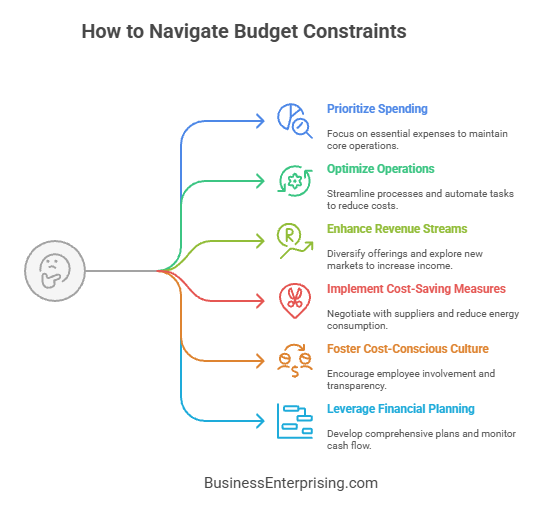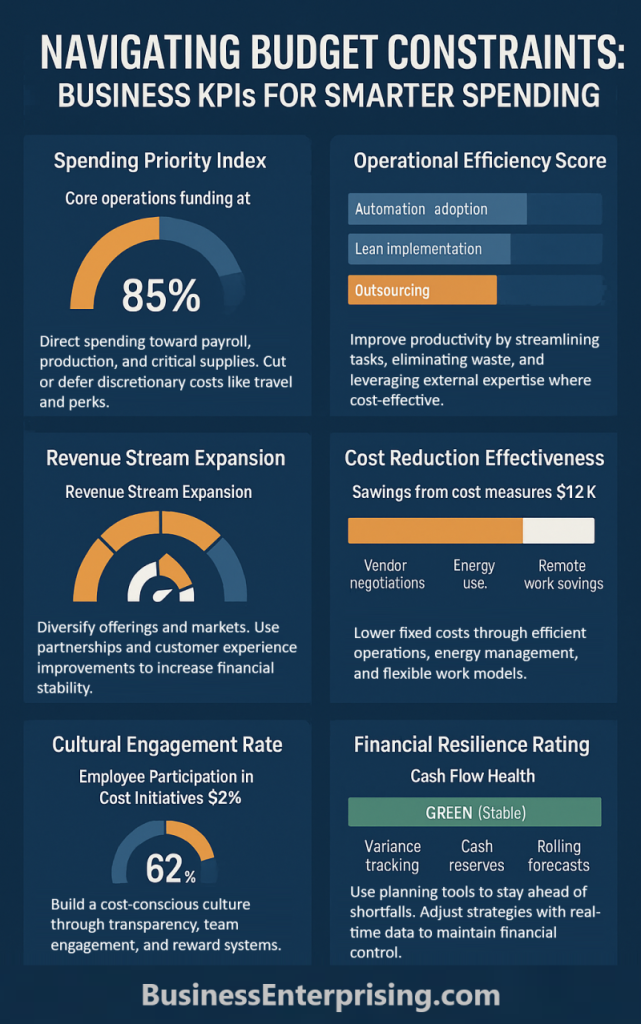
Prioritizing Spending
One of the first steps in dealing with budget constraints is prioritizing spending. Companies need to distinguish between essential and non-essential expenditures. Essential expenses are those that directly impact the core operations and revenue-generating activities of the business. These may include payroll, production costs, and critical supplies. By identifying and prioritizing these essential expenses, companies can ensure that their limited funds are allocated to the most critical areas.
Conversely, non-essential expenses are those that do not directly contribute to the core operations or revenue generation. These may include discretionary spending on marketing, travel, and office perks. While these expenses can enhance the business in various ways, they can often be reduced or deferred during times of budget constraints. Companies should conduct a thorough review of their spending to identify areas where costs can be cut without significantly impacting operations.
Optimizing Operations
Operational efficiency is key to managing budget constraints effectively. Companies should evaluate their processes and identify opportunities for optimization. Streamlining operations can help reduce costs, improve productivity, and enhance overall efficiency. One approach to optimizing operations is to implement lean management principles. Lean management focuses on eliminating waste and maximizing value by continuously improving processes.
Automation is another powerful tool for optimizing operations. By automating repetitive and time-consuming tasks, companies can reduce labor costs and improve accuracy. Investing in technology that enhances operational efficiency, such as enterprise resource planning (ERP) systems, can also yield significant cost savings. These systems integrate various business functions, allowing for better coordination and resource management.
Additionally, companies should consider outsourcing non-core activities. Outsourcing can provide access to specialized expertise and reduce costs associated with hiring and training in-house staff. For example, outsourcing functions like IT support, accounting, and human resources can free up internal resources and allow the company to focus on its core competencies.
Enhancing Revenue Streams
While managing costs is crucial during budget constraints, companies should also explore opportunities to enhance revenue streams. Diversifying revenue sources can help mitigate the impact of budget limitations and provide additional financial stability. One way to enhance revenue streams is by expanding the product or service offerings. By introducing new products or services that align with market demand, companies can attract new customers and generate additional revenue.
Another approach is to explore new markets. Expanding into new geographic regions or targeting different customer segments can open up new revenue opportunities. Conducting thorough market research and developing a strategic market entry plan are essential steps in this process. Companies should also consider forming strategic partnerships or alliances. Collaborating with other businesses can provide access to new markets, resources, and expertise, ultimately driving revenue growth.
Additionally, enhancing the customer experience can lead to increased revenue. Satisfied customers are more likely to make repeat purchases and refer others to the business. Companies should focus on providing exceptional customer service, addressing customer feedback, and building strong relationships with their customers. Loyalty programs and customer incentives can also encourage repeat business and increase customer lifetime value.
Implementing Cost-Saving Measures
Implementing cost-saving measures is a practical approach to managing budget constraints. Companies should identify areas where costs can be reduced without compromising quality or productivity. One effective cost-saving measure is to negotiate with suppliers and vendors. By renegotiating contracts and seeking better terms, companies can reduce procurement costs. Establishing long-term relationships with key suppliers can also lead to cost savings through volume discounts and favorable payment terms.
Another cost-saving measure is to reduce energy consumption. Implementing energy-efficient practices and technologies can lower utility bills and reduce the company’s carbon footprint. Simple measures such as turning off lights and equipment when not in use, optimizing heating and cooling systems, and investing in energy-efficient lighting can yield significant savings.
Additionally, companies should consider implementing flexible work arrangements. Remote work and flexible scheduling can reduce overhead costs associated with office space and utilities. Encouraging employees to work from home part-time or adopting a hybrid work model can lead to cost savings while maintaining productivity.
Fostering a Cost-Conscious Culture
Creating a cost-conscious culture within the organization is essential for managing budget constraints. Employees at all levels should be aware of the financial challenges the company is facing and understand the importance of cost control. Fostering a cost-conscious culture involves promoting transparency, encouraging employee involvement, and recognizing cost-saving efforts.
Promoting transparency involves openly communicating the company’s financial situation and the need for cost-saving measures. When employees understand the reasons behind budget constraints, they are more likely to support cost-saving initiatives. Encouraging employee involvement means actively seeking input and ideas from employees on how to reduce costs and improve efficiency. Employees often have valuable insights and can identify areas for improvement that may not be apparent to management.
Recognizing and rewarding cost-saving efforts can also motivate employees to contribute to the company’s financial stability. Implementing a recognition program that highlights and rewards employees who identify and implement cost-saving measures can reinforce the importance of cost-conscious behavior.
Leveraging Financial Planning and Analysis
Effective financial planning and analysis are crucial for navigating budget constraints. Companies should develop comprehensive financial plans that outline their revenue and expense projections, cash flow forecasts, and capital requirements. Regularly reviewing and updating these plans allows companies to adjust their strategies based on changing market conditions and financial realities.
Conducting variance analysis is an important aspect of financial planning and analysis. Variance analysis involves comparing actual financial performance to budgeted projections and identifying the reasons for any discrepancies. By understanding the factors driving variances, companies can take corrective actions and make informed decisions to stay on track.
Additionally, companies should focus on cash flow management. Maintaining a healthy cash flow is essential for meeting operational expenses and managing budget constraints. Companies should closely monitor their cash flow, manage receivables and payables effectively, and maintain adequate cash reserves to address unexpected expenses.
Conclusion
Dealing with budget constraints requires a strategic and multifaceted approach. By prioritizing spending, optimizing operations, enhancing revenue streams, implementing cost-saving measures, fostering a cost-conscious culture, and leveraging financial planning and analysis, companies can navigate financial challenges and achieve long-term success. While lower budgets can be challenging, they also present opportunities for innovation, efficiency, and growth. By adopting a proactive and strategic approach, companies can not only survive these constraints but also thrive in a competitive business environment. Ultimately, the ability to effectively manage a budget is a critical driver of sustainability and resilience in today’s dynamic marketplace.


